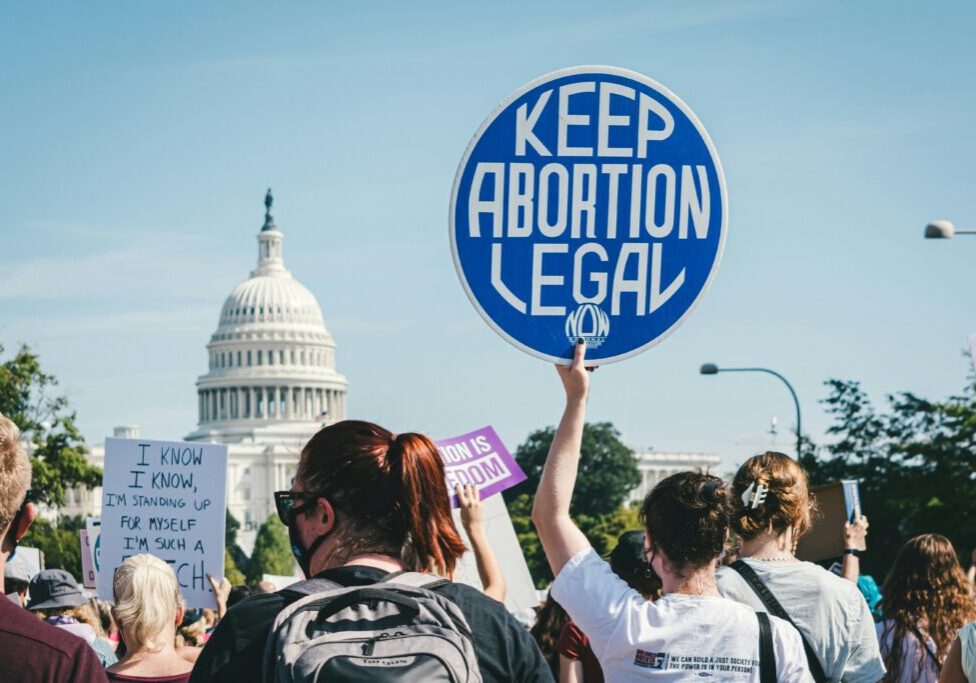Ohio voters on Tuesday overwhelmingly rejected an attempt to make it harder to amend the state’s constitution, an effort widely seen as a victory for abortion-right supporters. Issue 1, which sought to raise the threshold for amending the state’s constitution from a simple majority to 60%, was viewed as an effort by the state’s Republican-majority legislature to thwart a November vote to guarantee abortion rights and is part of a national effort by the GOP to restrict the use of ballot initiatives. The New York Times’ Michael Wines explains:
The Legislature’s move to raise barriers to new amendments came weeks before abortion rights advocates delivered petitions with roughly a half million verified signatures to state offices, more than enough to force the November vote. Tuesday’s election had become something of a proxy for the November election, with supporters of abortion access and anti-abortion forces waging a multimillion-dollar preview of the coming battle.
Policy Matters Ohio called the vote a victory for democracy.
Issue 1 was a blatant power grab. Proponents attempted to change the rules of the constitution because they know their policy interests run counter to those of the majority of Ohioans. Entrenched politicians and insiders are on the wrong side of the issues, from abortion care to fair districts. Policy Matters’ own modeling showed the same divide across issues like fair taxation, care response, and participatory budgeting.
Reality check: Louisiana voters are barred from putting issues directly on the ballot, as constitutional amendments require two-thirds majority votes in the state House and Senate before going to voters. Lawmakers have routinely shot down efforts to create a citizen referendum process, most recently last spring.
New Orleans targets preventable deaths
Recent reporting by The Advocate has highlighted Louisiana’s shamefully high infant and maternal mortality rates, and the disproportionate number of preventable deaths among Black babies and mothers. But two new programs in New Orleans are trying to reverse this dispiriting trend by providing free nurse visits and supply kits for new moms. Axios New Orleans’ Carlie Kollath Wells reports.
Family Connects New Orleans provides three free, at-home nurse visits for babies in New Orleans who were born Touro or Ochsner Baptist. The nurses can help with medical care, mental health services and community resources. The New Orleans Health Department runs the program. And $10 million in federal funding will only pay for the first three years, Mayor LaToya Cantrell said. Cantrell said she hopes the city will allocate money to pay the estimated $1.5 million annual cost after that. Nonprofit Baby2Baby partnered with the feds to provide maternal and newborn supply kits to new and expecting moms, with the pilot program launching at Touro and elsewhere in New Orleans. Baby2Baby will work with city and state officials to give diapers, wipes, clothing, formula, baby carriers and other health necessities to 3,000 mothers in New Orleans, Arkansas and New Mexico.
Food assistance for new moms projected to fall short
The expiration of pandemic benefits and rising prices is causing more moms to sign up for federal food assistance through the Special Supplemental Nutrition Program for Women, Infants, and Children (WIC). But Congress is balking at efforts to increase funding for the program to keep up with demand. WIC, which was already underfunded before Covid’s arrival, provides a crucial resource to millions of women who are either pregnant, breastfeeding, or have children younger than six months old by paying for certain kinds of healthy foods, such as fruits and vegetables. As Route Fifty’s Kery Murakami reports, legislation to cut funding has already advanced out of the U.S. House.
Whether Congress will increase funding is unclear. But House Republicans are pushing to sharply decrease funding. A bill that the Republican House Appropriations Committee passed in June would cut funding for WIC by $185 million. Specifically, House Republicans want to cut the additional amount women and their children receive for fruits and vegetables by between 56% to 70%. Pregnant women, for example, would see the amount they receive for those foods go down from $44 a month to $13. “That’s a pretty significant decrease in your purchasing power for something that we all know is a very healthy, really nutritious part of someone’s diet,” said Bergh.
Who gets left out of the personalized medicine revolution?
Personalized medicine, which uses molecular-genetic information about a patient to deliver tailored treatments, has been heralded as a transformational development that could bring hope to millions. While there are certainly some diseases where the genetic approach could save lives, others, such as hypertension, diabetes or asthma, are more of a consequence of a person’s environment. Another important caveat is the expensive costs of these tailored treatments and who gets priced out of these new “miracle cures.” Dr. James Tabery, professor of philosophy at the University of Utah, writing in a guest column for the New York Times, explains that we should be focused on preventing the development of illness rather than trying to treat them after a diagnosis.
It is abundantly clear that health disparities along racial and economic lines are largely caused by differences in our environments, not differences in our genes. That’s why the health and economic impact of addressing unsafe drinking water, food insecurity, exposure to heavy metals and countless other things is so important: Everyone benefits, not just the people with the right genes, the right skin color or the right bank account balance. … Improving health for us all, driving down the costs of health care and making the world a more equitable place are all noble goals. The most direct route, though, isn’t by way of orienting health care around the genetic differences between us. It’s by focusing it on the environments we share.
Number of the Day
179,000 – Number of Louisianans that live in “ambulance deserts.” Ambulance deserts are defined as areas where residents are more than 25 minutes outside of an ambulance service. (Source: Maine Rural Health Science Research Center via the Louisiana Illuminator)
